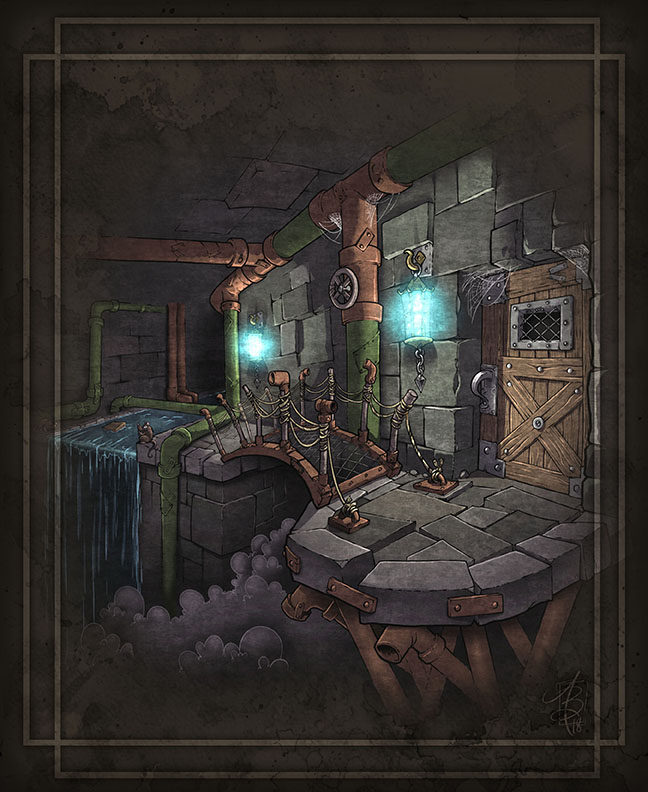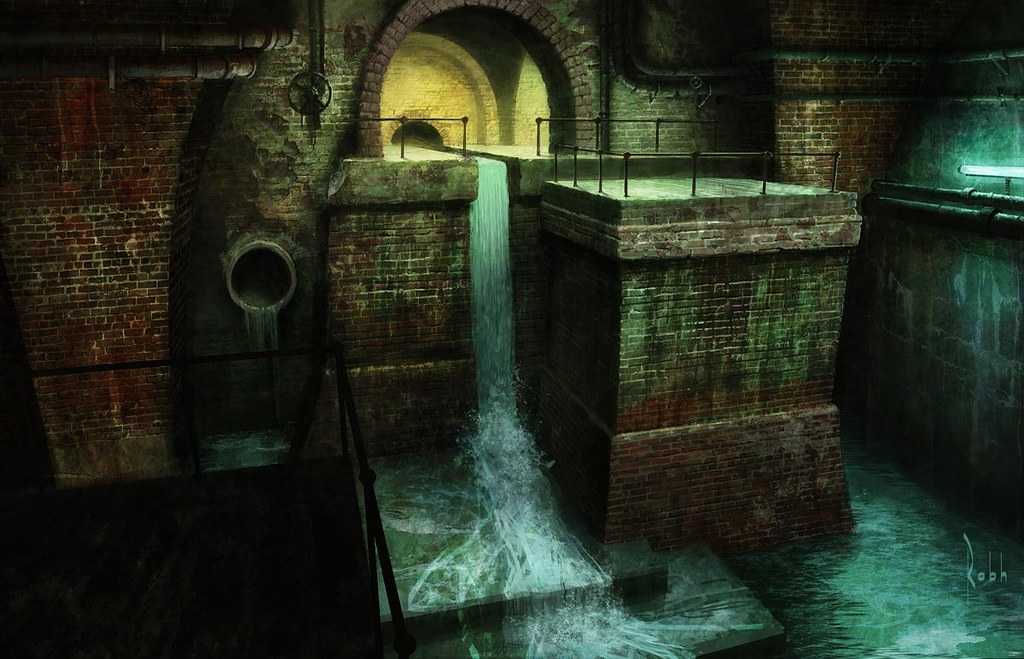
Separation Process

Separation Process
| Biology topics | 1. If I have a bowl of water with salt and sugar in it, is it possible to separate out the salt without the sugar, or filtrate out the sugar without the salt?
While the answer is yes to both, we know the human body does this too. Human urine is salty, and eating in sweet food does not make our urine sweeter. That generally means sugar is excreted the other route, metabolized into energy, or breathed out. Filtering salt from sugar in water: The 2 processes are osmosis and reverse osmosis. This is done because salt is smaller than sugar. So something small enough for salt to go through can prevent sugar from going through. Osmosis is where via pressure, you squeeze the salt out of water. (But the process in saltwater plants is actually reverse osmosis, where you squeeze the water out of salt.). There are permeable membranes out there. Filtering sugar from salt in water: -Using a solvent that dissolves sugar but does not dissolve salt. That would be using an alcohol such as ethanol. However, you boil all the water 1st, leaving just salt and sugar, then pour in the ethanol, and so the salt is now settled at the bottom that can be filtered out, in this now-ethanol solution. Then the solution of sugar ethanol can now be evaporated over a water bath, as alcohol is inflammable. -Another inconvenient process is it should be possible to make a membrane that blocks salt but allows sugar through, based on ion charges. You only have to block 1 of the ions, and other ion will be blocked by the electric field after a few have diffused to the other side. Note that this is similar to a question in computer science, where you have variables like int a; and int b;, then is it possible to switch the values of a and b, without losing their original values? If you set a = b 1st, or b = a 1st, then the original values is lost. Which is why, you introduce a 3rd variable c. Say, b = c;, then declare a = b;, and c = a;. Now a and b are swapped, without their original values being lost. For that example, a real world equivalence is like asking if you have a cup of orange juice, and a cup of grape juice, can you transfer the 2 juices into the other cup, without using a 3rd cup? If without using a 3rd cup, then you would have to pour the orange into grape or grape into orange, then separate out, which is inconvenient. So in computer programming, 2 variables a and b cannot be swapped at the same time, 1 must be stored elsewhere. Another computer example for this, is swapping the values of 2 cells in a spreadsheet like Excel. In any event, having a bowl of grape juice and orange juice mix, and trying to filter them out, is not the same as asking a bowl of water with salt and sugar in it, as salt and sugar are on opposite ends of the ionic-covalent continuum, making them have different properties. You would have to ask questions like, what makes apple juice apple juice, and what makes cranberry juice cranberry juice, in order to filter them out (and also find out they can have a lot of overlap). 2. How does the human body separate salt and sugar? Human urine is 95% water, with the next largest being urea, then the ions of sodium, chloride, and potassium. But eating sweet stuff does not make our urine more sweet. Therefore, sugar presumably are not urinated. They can be excreted or metabolized into energy for our cells (or breathed out as a gas, too, actually). (But it is often possible for diabetics to have sweet urine, or if you have too much sugar in the blood (180 mg/dL or 180 mg/100 mL.)). Note that the combined action of insulin and glucagon, blood exiting the liver has a glucose concentration of 70-110 mg/100 mL. Salts are ionic, and sugars are covalent. But sugars dissolve in water too, not by the molecule itself breaking apart, but sugar molecules breaking from surrounding sugar molecules. The answer is in the blood vessels, when enzymes break down sugars, and the sugars are either stored as fat, or in the case of glucose, broken down into 6 CO2 molecules and exhaled out (if undergoing glycolysis, and then the Krebs cycle). Everything going into the kidneys come from blood vessels, then sugar is refiltered back into the blood vessels. (If this did not happen, then we would rapidly lose blood glucose and slip into a coma very quickly.). Exceptions to this is when blood glucose levels are really high (type I diabetes, mellitus), which can cause urine to be a little sweet. Salts are absorbed with water, in the small intestines. Salt breaks down in the stomach, but at a little less than in pure water. Sugars are metabolized, then absorbed. Hydrochloric acid breaks down sucrose into glucose and fructose, breaks down linkages between sugars, and causes some oxidation. Sucrose is broken down by sucrase in water in the small intestines, into glucose and fructose, which are absorbed in the small intestine. However, more sucrose is broken down by sucrase in the small intestines, than by HCl in the stomach. Amylase breaks down starch info glucose and maltose (2 glucose units) which are also absorbed in the small intestines. For ~65% of the adult population, lactose is broken down by lactase, into glucose and galactose, also absorbed in the small intestines. (>90% of east Asians being lactose intolerant, and ~5% of northern Europeans.). Insulin and glucagon are the primary hormones involved in maintaining a steady level of glucose in the blood. Additionally, proteins are digested in the stomach and small intestines. Sucrase is produced by the cells lining the small intestine. Note: every cell in our body can utilize glucose, but only the liver can utilize fructose (the liver is the only organ in the body that can get energy out of fructose, which is converts to fat). The circulating glucose in the blood vessels undergo glycolysis, in which glucoses causes ADP to turn to ATP, but is itself broken into 2 pyruvate molecules (this happens inside cells, usually the liquid part of cells, the cytosol). The pyruvate molecules, are now ready for the aerobic Krebs cycle, (which is also called the citric acid cycle and tricarboxylic acid cycle), in which each carbon atom in pyruvate is converted into CO2 (which happens in the mitochondria), or an anaerobic process which is then converted into lactic acid. Some lactic acid is converted back to pyruvate or glucose (via the Cori cycle), in the anaerobic respiration, as red blood cells do not have mitochondria, so they produce ATP. During exercise, muscles use ATP faster than oxygen can be delivered to them, so they depend on glycolysis and lactic acid production for rapid ATP production. The body also has a way of generating glucose during starvation, which is called gluconeogenesis. In any event, 1 glucose is broken down into 2 pyruvate molecules if undergoing glycolysis, and each pyruvate molecule, being 3-carbon chain, breaks off into 3 carbon dioxide molecules if undergoing the Krebs cycle, so individual glucose molecules can break down into 6 CO2 molecules that is to be exhaled out (though not all glucose undergoes glycolysis and not all pyruvate undergoes Krebs cycle). Besides converting back to glucose, pyruvate can also turn to lactate of oxygen is lacking, or combined with Acetyl CoA to form fatty acids. This does not necessarily mean that a person who eats more sugar, breathes out more CO2 than other people. But that can happen during jogging/exercising. Table of solubility per 100 mL of water.
Sucrose for example, takes 1 g to dissolve in .5 mL of water, at almost 20 C. |
About.Us | |||||||||||||||
| Microbiology
Biochemistry Botany Genetics Anatomy Nutrition Research Trivia |
|||||||||||||||||
| Chemistry topics | Quotes | ||||||||||||||||
| Chemicals
Reactions Liquids Geometry Polymers Environmental Chemistry Photochemistry Gemology Cosmetics Radiochemistry Research Trivia |
|||||||||||||||||
| Physics topics | Affiliates | ||||||||||||||||
| Electricity
Electronics Materials Particle Physics Auto technology Astronomy Field Theory Hydraulics Research Trivia |
|||||||||||||||||
| Biology-Chemistry | |||||||||||||||||
| Toxicology
Pharmacology Medicinal Chemistry |
|||||||||||||||||
| Chemistry-Physics | |||||||||||||||||
| Colligative properties
Spectroscopy Material Science Magnetism Quantum Physics |
|||||||||||||||||
| Physics-Biology | |||||||||||||||||
| Photometry
Photobiology |
|||||||||||||||||
| Other | |||||||||||||||||
| Meteorology
Computer Science USA-Finance Mobile technology Mathematical concepts USA-Crime Telecommunications Quantum computing |
|||||||||||||||||
| _ _ _ _ _ _ _ _ _ _ _ _ _ _ _ _ |
